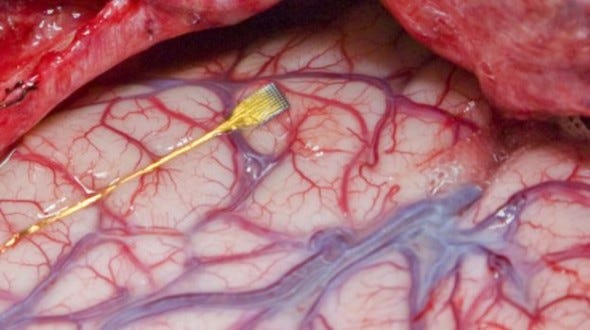Pentagon Seeks a Memory-Restoring Implant
February 7, 2014
The Department of Defense, through the Defense Advanced Research Projects Agency (DARPA), recently announced that it is seeking proposals related to memory-restoring brain implants. In particular, they have begun "soliciting innovative research proposals to develop a neural device for human clinical use to restore specific types or attributes of memories." The goal of the project, which is still in the proposal stage, is to develop a device to help restore memory to some of the more than 280,000 troops who have suffered brain injuries since 2000, including in combat in Iraq and Afghanistan.
The Restoring Active Memory (RAM) Program seeks to provide better ways of treating traumatic brain injury. Ultimately, the RAM Program is aimed at developing an implantable neural device that enables recovery of memory. In addition to the wounded troops, DARPA reports that an estimated 1.7 million Americans are diagnosed with traumatic brain injuries annually.

Geoff Ling, MD, deputy director of DARPA's Defense Sciences office, was interviewed by Bloomberg's Kathleen Miller. Ling said the DARPA initiative isn't designed to recover the type of memories used to recall a person's name. Instead, it would help wounded warriors recover "task-based motor skills" necessary for "life or livelihood." He told Miller that the brain implant, for example, might enable people to recall how to drive cars, tie their shoes and perhaps eventually operate machinery or fly planes.
The solicitation for proposals (PDF here) seeks novel approaches that "enable revolutionary advances" in the development of methods of describing "the means and processes by which complex memories are encoded." Further, the model should "distinguish neural activity underlying information that is effectively converted to long-term memories and can be recalled hours, days, or weeks later, as compared to information that is not retained."
This model must be able to distinguish the attributes, categories, and associations of memory. Attributes are described as the "memory of sensory characteristics of objects or events, or the contexts in which they occur." Categories are "high-level semantic classification of sets of objects or events with similar characteristics." Associations are defined as "two or more components (i.e., attributes or categories) linked to one another in a memory, occurring either simultaneously or across a temporal dimension (e.g., chronological order)."
Valid proposals must at least address the required "Development of a computational model of neurobiological mechanisms underlying memory in humans" and may optionally include "A portable, secure wireless prototype implantable neural device for restoration of memory encoding in human clinical populations" and may, "In animal testbeds, investigate multiple types of complex memories and develop novel computational models to restore memory function."
DARPA says how much money is awarded depends on the quality of proposals and the amount of money available. But the project is likely to be a boon for medical device makers such as Medtronic, Boston Scientific, and St. Jude Medical that are already heavily invested in neuromodulation devices.
About the Author(s)
You May Also Like

.png?width=300&auto=webp&quality=80&disable=upscale)
